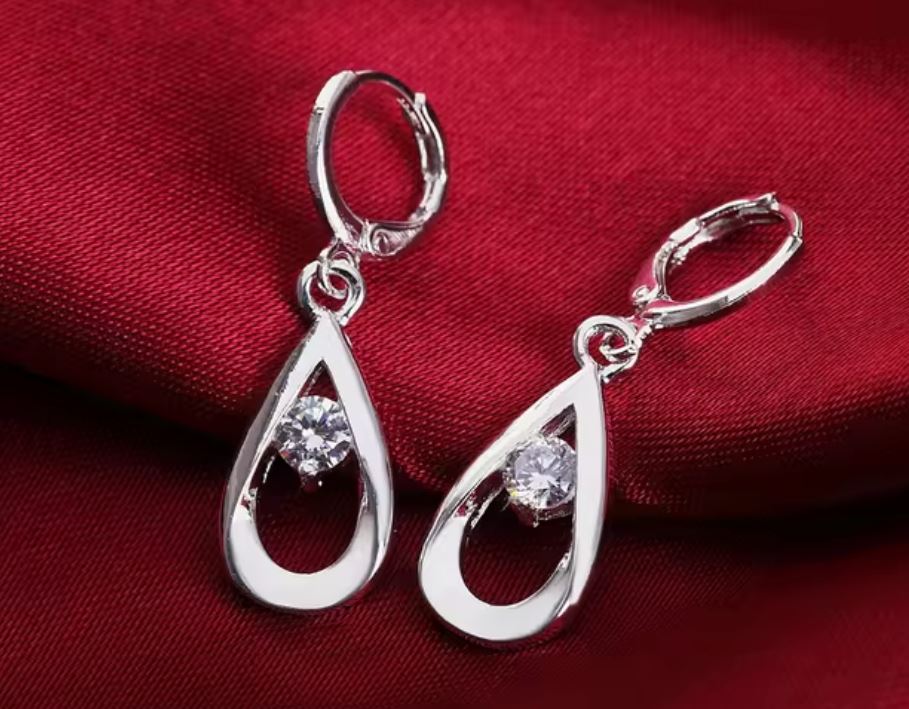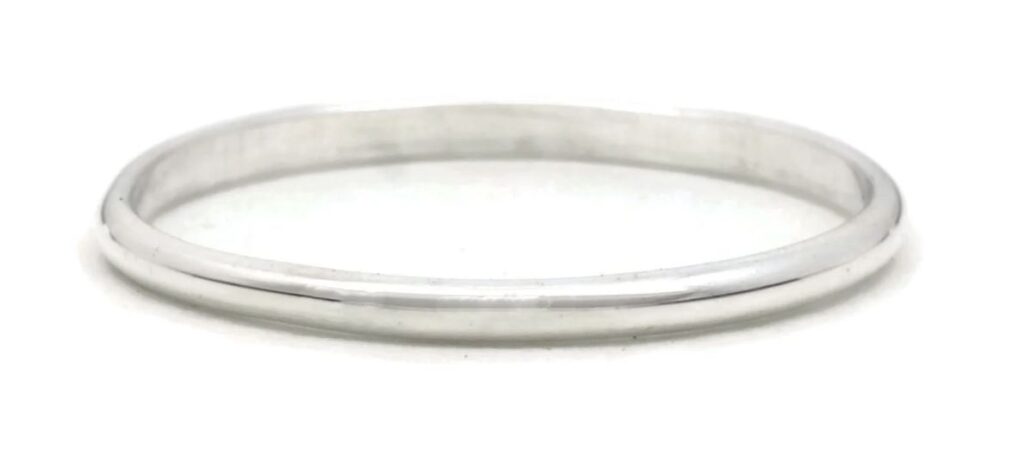Are Silver Rings Waterproof?
Silver rings can get damaged by water and cannot be called as waterproof. Water cannot only damage silver’s shiny appearance but also start tarnishing which can further make it ugly. You should save your silver jewelry from getting into contact with water. Common actions that can damage your jewelry are swimming, washing hands, showering, laundering and other household tasks.
In this article we’ll discuss are silver rings waterproof, how they can be damaged by water and what can you do to save it.
Why Silver is Damaged by Water?
Sterling silver, which is the most widely used alloy of silver contains 7.5 percent copper by weight. This addition of copper is to increase the hardness and ability to withstand scratches. However, copper is a very reactive metal towards water. For example, it can react with water to start tarnishing. This makes jewelry appear blackish. Copper also makes silver a non-hypoallergenic metal.
Water often contains different salts, minerals and chemicals which are harmful for jewelry particularly silver. These chemicals are often found in tap water, seawater and chlorinated water where they can quickly react with any type of jewelry.
This makes it very important to save your jewelry from water damage.
What Kind of Damage Can You Expect?
Water can damage silver jewelry in many ways.
1. Tarnishing
Tarnishing is the biggest and foremost damage caused by regular contact. It creates a thick dull layer over silver’s surface. This makes it appear black in color rather than white and looks very bad. Though, main cause of tarnishing is copper, but water can increase the speed at which tarnishing happens. Regular water contact helps copper to react faster than normal.
Tarnishing is a temporary problem and can be removed by using tarnish removing chemicals.
2. Discoloration of Gemstones
Discoloration of gemstones is another sort of damage caused by water. Precious stones like turquoise and ruby are expensive. Chemicals from water can react with stones and cause discoloration. By this, stones will lose their shine and appear dull. Seawater and chlorinated water from swimming pools cause the most damage.
3. Loosening of Gemstones
Gemstones are often loosely bound by some sort of gum in jewelry items. With time, this gum becomes dry and starts loosening its grip on precious stones. Water contact can further damage this drying gum. This will lead to lose of precious stones which will not only cost you money but also make jewelry appear bad. Once you lose one or more stones, there are some chances that you are not able to find exactly the same stones in size and color.
4. Wearing off of Plating
Silver jewelry also comes in gold and rhodium plating. Commonly, this plating is very thin and can wear off even on minor damage. Water can also damage this plating. On regular damage, first plating will start wearing off from different spots leading to whole plating wearing off. After this, you will have to re-plate it again which will cost more money.
Note that all of these damages are only caused by regular contact of water. Occasional water might not damage jewelry at this extent.

How Long Will it Take Water to Damage Silver Ring?
Occasional, short-term exposure to water such as washing your hands or being caught in the rain is unlikely to cause immediate damage to your silver ring. However, repeated exposure over time can build up tarnish on the surface.
Constant or prolonged exposure to water, particularly in environments like swimming pools or the ocean, can have a more significant effect on silver. Saltwater, for example, is highly corrosive and can hasten tarnishing, while chlorinated pool water can damage the finish of your silver ring, especially if worn regularly during swimming.
On an average it will take around 2 to 3 months of regular wearing to develop any significant effects. This time can be shorter if you live in a coastal area. That’s why it is better to use precautions for better look of your jewelry.
How to Save Silver from Water Damage?
There can be multiple ways to save silver jewelry from water damage. One is to use precautionary steps so the damage is minimized. Other is to use water repellent which will protect silver from water damage.
1. Remove Jewelry before Water Activities
The most effective way to prevent water damage to your silver rings is by removing them before engaging in any activities involving water. This includes swimming in pools or the ocean, showering, or even washing dishes. By taking off your rings during these activities, you can avoid the tarnishing effects of exposure to water.
2. Regular Cleaning
It is important to clean your silver rings regularly to remove any moisture, dirt, or oils that may build up. Use a soft cloth to gently buff the surface and restore the shine. If your ring has been exposed to water, ensure it is thoroughly dried before storing it.
3. Avoid Humid Places
Avoid wearing silver jewelry in humid places or weather. It can speed up the process of tarnishing.
Excess humidity, particularly in tropical or coastal areas, can also contribute to tarnishing. The moisture in the air can combine with sulfur compounds, leading to a film of tarnish forming on the surface of the silver. While this process takes time, it is worth considering when storing or wearing silver rings in highly humid environments.
4. Store Jewelry Properly
When not in use, store your silver jewelry in a dry, cool place. A jewelry box or pouch that is lined with anti-tarnish fabric can help keep moisture and air away from your rings. Avoid leaving your silver rings in areas with high humidity or direct sunlight.
5. Do Special Care for Gemstone Jewelry
Many silver rings feature gemstones, and these can be even more vulnerable to water exposure than the silver itself. Some gemstones, such as opals, are porous and can absorb water, which could lead to damage or discoloration. Additionally, the settings or adhesives used to secure gemstones may not be waterproof, so exposure to water could weaken their bond over time.
To protect gemstone-set silver rings, it’s best to remove them before water-related activities and to clean them gently with a damp cloth rather than submerging them in water.

FAQs about Silver Waterproof
Here are some of the FAQ’s you might have.
Are silver rings waterproof?
No, silver rings are not completely waterproof. While they can withstand occasional exposure to water, prolonged or frequent contact with water—especially saltwater or chlorinated water—can cause tarnishing, corrosion, and damage over time.
Can I wear my silver ring while swimming?
It is not recommended to wear your silver ring while swimming, particularly in saltwater or chlorinated pools. Saltwater is highly corrosive and can tarnish silver quickly, while chlorine can damage both the silver and any gemstones set in the ring.
Can I wear my silver ring in the shower?
While a brief exposure to water in the shower might not cause immediate damage, regularly wearing silver rings in the shower is not recommended. Prolonged exposure to water and soap can accelerate tarnishing and cause your silver ring to lose its shine.
Why does my silver ring tarnish after being exposed to water?
Silver tarnishes when it reacts with sulfur compounds in the air or water. Moisture, particularly from saltwater or chlorine, can increase this reaction, causing the silver to develop a dark, dull layer of tarnish over time.
Conclusion
While silver rings are not fully waterproof, they can tolerate some occasional exposure to water without immediate damage. However, frequent or prolonged contact with water, especially saltwater or chlorinated water, can lead to tarnishing and corrosion.
To protect your silver rings and keep them looking their best, it is advisable to remove them before engaging in water-based activities and follow proper care guidelines, such as cleaning and storing them in dry conditions. By taking these simple precautions, you can ensure that your silver rings maintain their beauty and last for many years to come.

